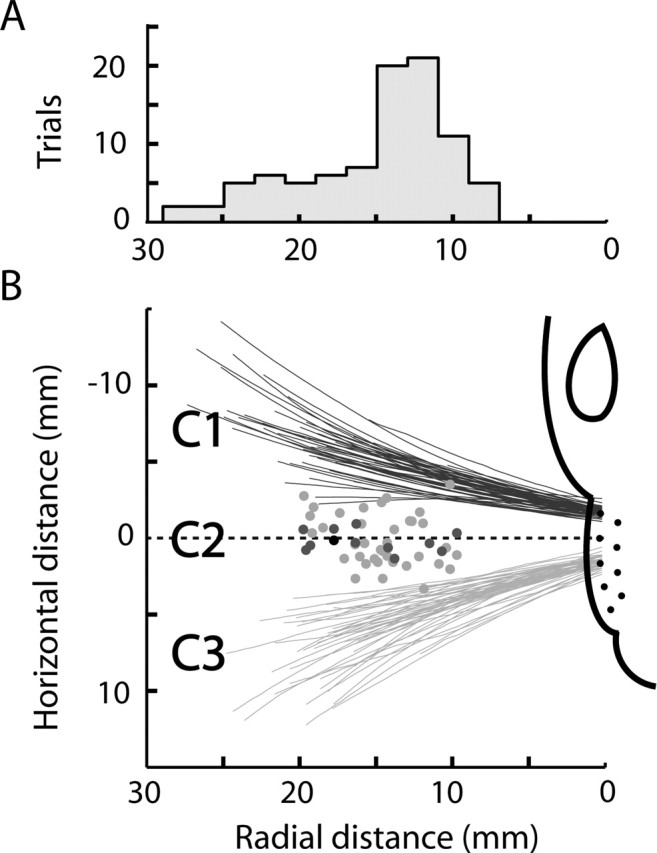Figure 11.

Separation distance of neighboring whiskers and discrimination thresholds. A, Distribution of radial contact locations along the whisker shaft during object localization. B, The spatial distance between neighboring whiskers. Horizontal separation, as a function of radial distance, of whisker pairs C1–C2 (dark gray) and C2–C3 (light gray), obtained while rats from the ROW configuration were whisking through the air. Each line is the average horizontal separation in a single trial. Dots indicate performance thresholds, selected from all whisker configurations, significantly smaller than the average inter-vibrissal distance (light gray, p < 0.05; medium gray, p < 0.01; dark gray, p < 0.001). The location of the threshold values along the abscissa were randomized, because the radial contact data were lacking for the majority of sessions from which these were obtained. The rat head is drawn approximately to scale. Radial positions in A and whisker separations in B were gathered from 90 trials performed by two rats with the ROW whisker configuration.
